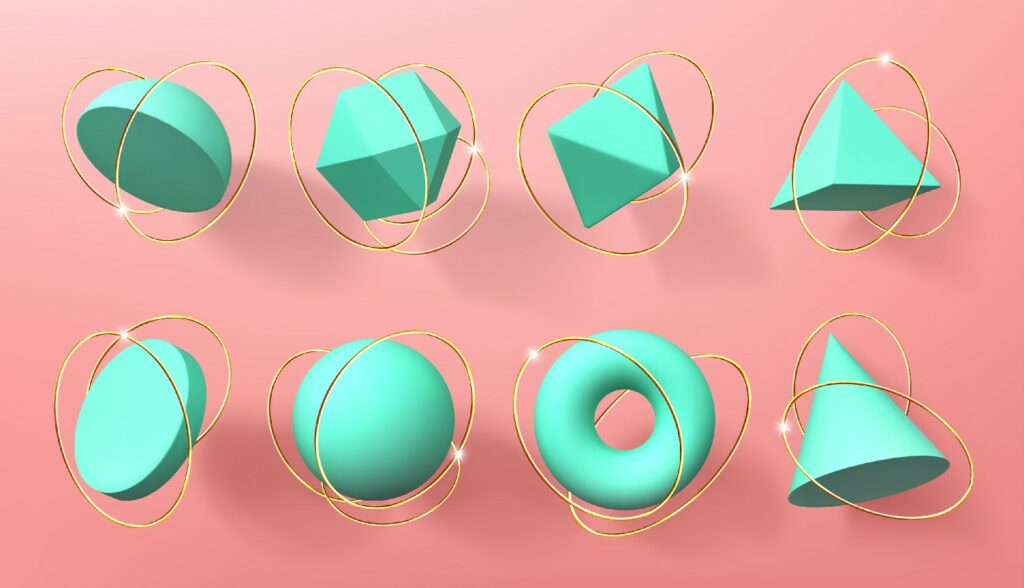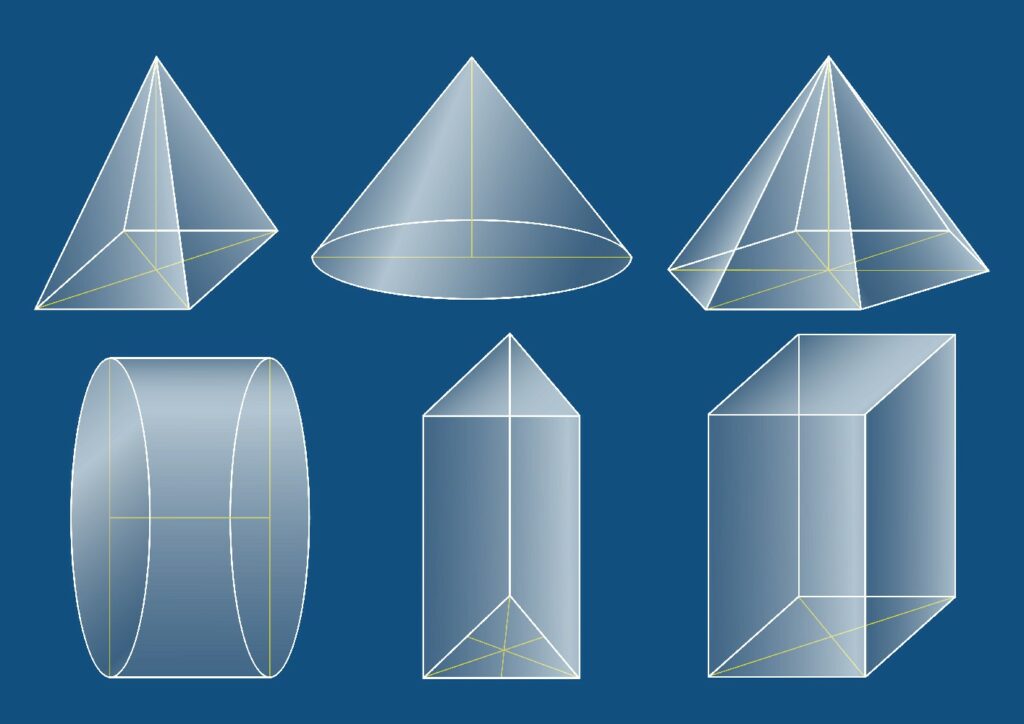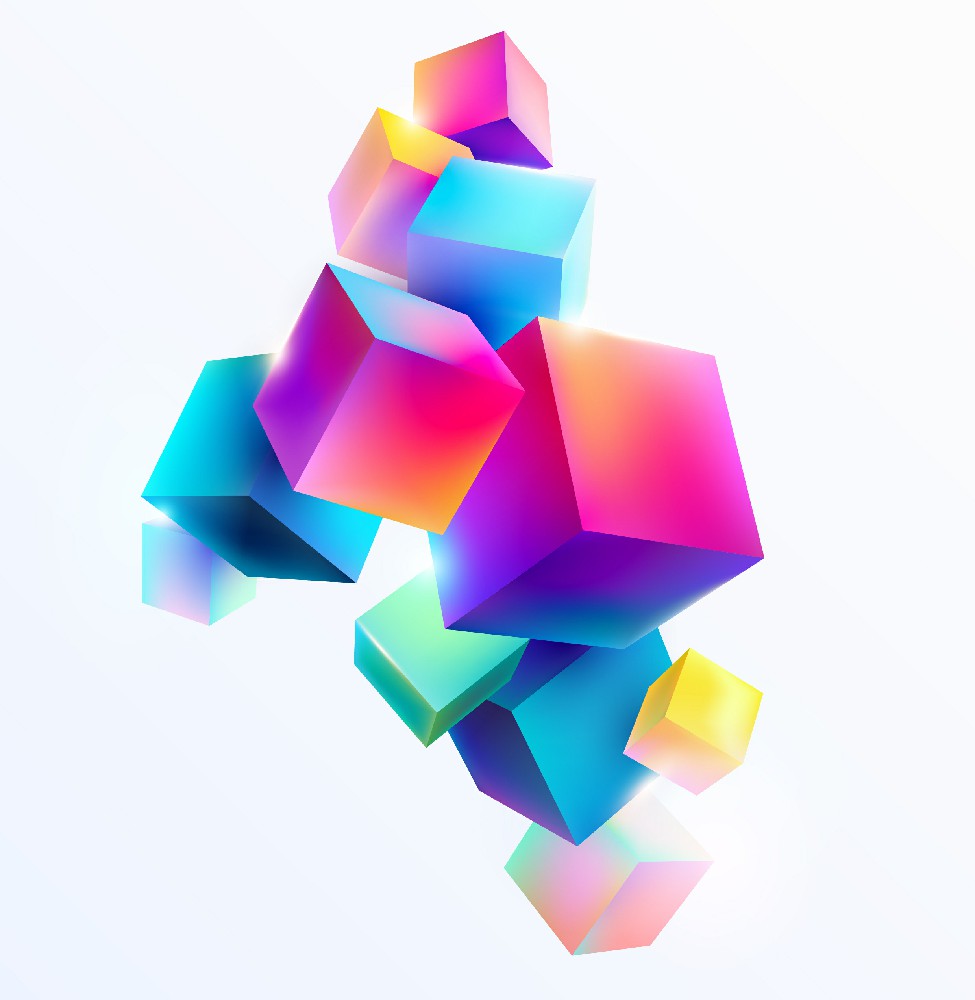If you want to understand 2D and 3D design elements and how these design elements in art shape modern digital work, this guide will help you explore the essential 2D composition elements used by artists.
Nowadays, the way we express art is constantly evolving, and painting is gradually losing its trend. As technology advances, digital art is becoming more popular. Line, color, shape, value, texture, and space are all common 2D composition elements. Material, closeness, gesture, location, texture, and pattern, on the other hand, are all new elements to 3D work.
Before we dive into the design elements that bring two and three-dimensional designs come to life, let’s have an idea of how they are similar and different from each other. Are they the future or the foundation of digital arts?
2D & 3D Design Elements: Similarities and Differences

The actual dimensions in a computer workstation are referred to as 2D and 3D. The image has only two dimensions when utilizing the horizontal and vertical dimensions, and then turned to the side, it becomes a line. The depth dimension is added in 3D. This third dimension enables rotation and visualization from various angles. It’s the distinction between a photograph and a sculpture.
Both 2D and 3D design elements play a major role in how artists build visual structure, and understanding these design elements in art helps improve any 2D composition elements used in drawing or digital design.
The major distinction between 2D and 3D shapes is that shapes that can be generated on a flat surface are referred to as 2D (dimensional) shapes. In other terms, 2D shapes are those that just have length and width. A 3D shape, on the other hand, has three dimensions: length, width, and height. The two-dimensional shape represents Top view, side view, bottom view, front view while three-dimensional shapes, on the other hand, are isometric and orthogonal shapes.
When it comes to the ease of construction, 2D is way easier to construct more than 3D, a three-dimensional shape is quite complex due to some elements that are not visible or hidden due to its overlapping compositions. While two-dimensional shapes have complete and visible edges due to their flat demeanor.
Though they share about 70% of design elements they have additional elements that are unique to each other is the reason why they live up to their evolving trends on digital art media. The following are the design elements that 2D and 3D designs are BOTH composed of:
1. Lines
Many artists consider it to be the most fundamental aspect of art. In the realm of art, a line is referred to as “a moving dot.” The line can be used in a variety of ways in the creation of drawings and paintings.
The most obvious application of line is when it is used to delineate a subject’s edges or boundaries. The line can be used to communicate a subject’s edges. When we start a drawing, we usually start by drawing the subject’s outlines. The outlines are only the beginning, as lines are also utilized to describe the subject’s features. We can usually reduce areas of contrast on a subject to a line.
The most fundamental graphic element is the line. Lines can be used to represent motion, emotion, and other characteristics, as well as to define forms and figures.
2. Shape

When a line is enclosed, a shape is formed. The shape is one of the seven components of art and has a wide range of applications in the creation of artwork. It is commonly thought of as a closed contour. So, if you draw a line and then enclose it, you’ve made a shape.
In the development of art, shapes can play a significant role. They aid in the creation of intricate drawings and paintings, influence composition, and add to the work’s overall balance. All shapes will be classified into one of two groups. Geometric or regular shapes are easily identifiable. You’ll be able to tell which are 2Ds and which are 3Ds by looking at these forms.
3. Value
One of the elements of dimensional design is value. The value of a color refers to how light or dark it is. Because we observe and interpret items based on how dark or bright they are, value is tremendously essential in art.
Value’s entire purpose is to give the illusion of light. As a result, value is used to generate the appearance of highlights and shadows. The combination of highlights and shadows creates the illusion of a light source. You don’t have an illusion if you don’t have a light source.
4. Texture
The texture of an object relates to how it feels to the touch or how it appears to feel if it were touched. It will result in stronger drawings, illustrations, and paintings if you fully get it. Everything has a texture to it. Some objects appear to be rough, but they are actually smooth.
The visual or inferred texture is a texture that is designed to appear to be something it is not. Texture can be utilized to generate visual interest or a focal point in a work of art, as well as to create contrast within a design and to visually balance a composition.
5. Color

Color is a fundamental element of art that involves the use of light. When light waves strike an item and are reflected into our eyes, it creates this effect. Each light wave is distinguished by its color. Because some wavelengths are absorbed while others are reflected or transmitted, objects appear to be different colors.
The colors we perceive are determined by the wavelengths that are reflected back to our eyes. And because the color is created by a light source it can be seen directly or reflected. All colors are represented by light waves in daylight or white light. Without light, there is no color!
3D Additional Design Elements
All of these elements are the foundation of a good 2D and 3D design. But because of the ‘flat’ and ‘isometric’ differences of the two designs, the following are the additional elements to capture the beauty of three-dimensional art figures:
6. Form

A three-dimensional composition or an object within a three-dimensional composition can be referred to as a form. It is, in particular, a contained place whose limits are established by other works of art. The dimensions of shapes are limited to two: length and width.
A form is an artist’s approach to combining art elements, design ideas, and mediums. The form is a three-dimensional aspect of art that encloses space. A form has length and width, just like a shape, but it also has depth.
7. Space
The distance between the region around and within shapes, forms, colors, and lines is referred to as space in art. Space can have a positive or bad connotation. The background, foreground, and middle ground are all included. Both positive and negative space can be crucial to a piece of art’s overall success.
Three-dimensional space exists in the real world. In a work of art, the term “space” refers to a sense of depth or three dimensions. It can also relate to the artist’s utilization of the picture plane’s region. Negative space refers to the space around the primary things in a piece of art, whereas positive space refers to the space occupied by the primary objects.
Final Words
Design elements are your rules in creating a dynamic composition. The way you approach a composition will be extremely different depending on whether you want to construct something static (2D) or dynamic (3D). That is why we must learn both two-dimensional and three-dimensional figure elements. You can utilize the rules to design something with a different intent after you understand how they function.


